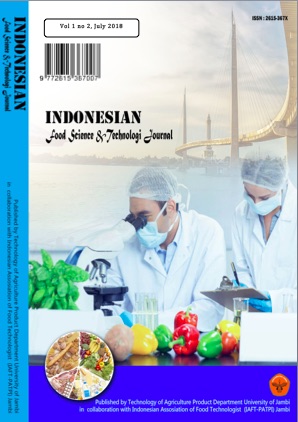Optimization of Anthocyanin Content in Uwi Flour (Dioscorea alata) Using Response Surface Methodology
DOI:
https://doi.org/10.22437/ifstj.v1i2.6006Abstract
Abstract—Main problem in the processing of Dioscorea alata’s tuber into flour is the changing of colour. One factor in color changing is attributed to antocyanin reaction in the tuber. Several methods can be applied to minimise the browning and hence maintain the natural colour preferred by the consumers. This research was conducted to obtain the combination of age of harvest, blanching temperature and blanching length which produce the highest content of antocyanin in Dioscorea alata’s flour. The responses measured was anthocyanin content. The result showed that age of harvest was the main factor for anthocyanin content of Dioscorea alata flour. The optimum anthocyanin content is predicted to be achieved by using tuber harvested at 9.6 months, temperature of blanching 86.12oC and blanching time for 0.56 menit.
Downloads
Downloads
Published
Versions
- 2019-07-21 (1)
- 2019-07-21 (1)
How to Cite
Issue
Section
License
Copyright (c) 2018 Indonesian Food Science & Technology Journal

This work is licensed under a Creative Commons Attribution 4.0 International License.







